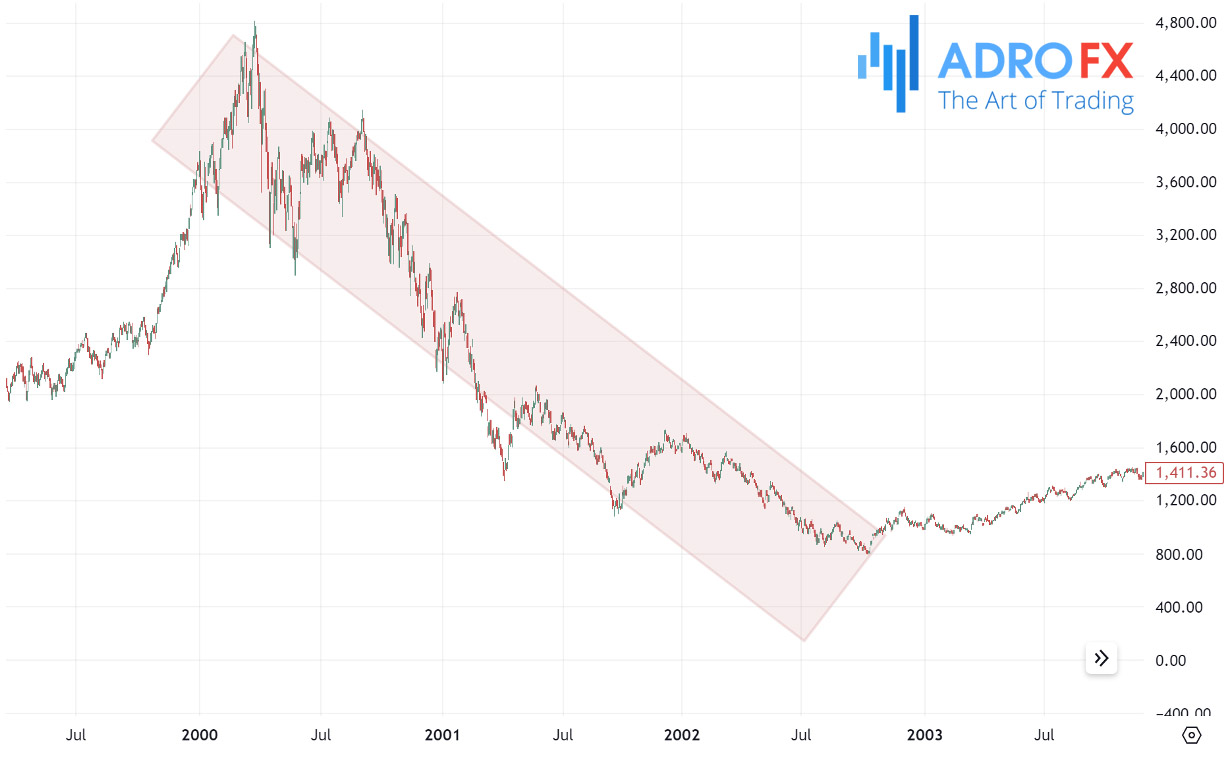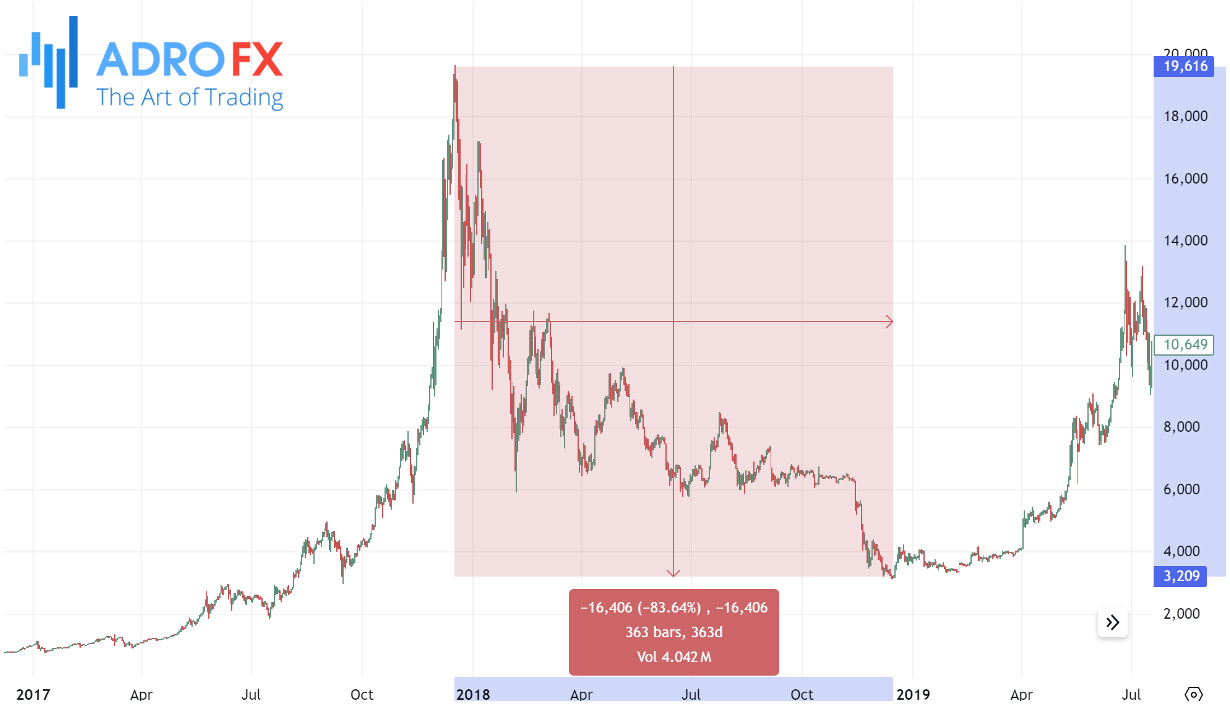The Danger of Following the Herd: Why Trend-Chasing Can Hurt Your Portfolio

Have you ever found yourself making investment decisions based on what everyone else is doing? It’s a common scenario - investors rushing into the latest hot stock or abandoning a sector because it’s suddenly out of favor. The urge to follow the crowd can be overwhelming, but is it really the best strategy for your portfolio?
In the world of investing, trend-chasing - where investors follow market trends without careful consideration - can often feel like a safe bet. After all, if everyone else is doing it, it must be right, right? This behavior, known as herd mentality, is deeply rooted in human psychology. However, in the financial markets, blindly following trends can be dangerous. Trend-chasing can lead to poor investment decisions and, ultimately, harm your portfolio. In this article, we’ll explore the risks of trend-chasing and why it’s important to develop a solid investment strategy that resists the pull of the crowd.
What Is Trend-Chasing?
Trend-chasing is the practice of making investment decisions based on the prevailing direction of the market rather than through careful analysis or a well-thought-out, long-term strategy. Investors who engage in trend-chasing often find themselves buying assets that have recently surged in value, hoping to capitalize on the upward momentum, or selling assets that are declining, fearing further losses. The key characteristic of trend-chasing is its reactive nature - investors make decisions based on what’s happening now, rather than on a clear understanding of what the future may hold.
A classic and cautionary example of trend-chasing occurred during the dot-com bubble of the late 1990s. As tech stocks began to soar, countless investors jumped on the bandwagon, pouring money into companies with little to no earnings, simply because their stock prices were rising. The euphoria was contagious - no one wanted to miss out on the next big thing. However, when the bubble inevitably burst, those who had chased the trend found themselves with substantial losses, as overvalued stocks plummeted back to reality.
Also read: Resilience Unveiled: A Historical Exploration of Stock Market Crashes and Strategic Recovery
More recently, the meme stock phenomenon of 2021 showcased another instance of trend-chasing on a massive scale. Stocks like GameStop and AMC experienced wild price surges driven not by fundamental value but by social media-fueled hype.

Retail investors, motivated by online forums and the fear of missing out (FOMO), rushed to buy these stocks, driving their prices to unsustainable levels. While a few early adopters profited handsomely, many others who followed the trend ended up holding overpriced shares when the hype died down and prices crashed.
In both cases, the underlying force at play was herd mentality - a psychological phenomenon where individuals mimic the actions of a larger group, often at the expense of their own rational judgment. This herd behavior drives market bubbles, where prices inflate beyond reasonable levels, and eventually, painful corrections occur. Trend-chasing, fueled by the desire to follow the crowd, can lure investors into risky situations, often leading to significant financial losses.
By understanding the dangers of trend-chasing and recognizing the role herd mentality plays, investors can better guard against making impulsive decisions that may jeopardize their financial well-being.
The Psychology Behind Herd Mentality
Herd mentality is deeply ingrained in human behavior, and it plays a significant role in how investors make decisions. One of the primary psychological drivers behind herd mentality is the fear of missing out. When investors see others profiting from a particular trend or asset, they often feel an intense urge to join in, fearing they’ll miss out on potential gains if they don’t act quickly. This fear can override logical thinking, leading to impulsive decisions based on emotion rather than careful analysis.
Overconfidence is another psychological factor that fuels herd mentality. When a market trend appears to be gaining momentum, many investors become overly confident in their ability to predict the future. They believe that if the majority is doing something, it must be the right move, and they overestimate their own ability to time the market. This overconfidence often blinds investors to the risks associated with their decisions.
Connection to Investing
Herd mentality significantly impacts investment decisions by pushing investors to follow the crowd rather than stick to their own well-planned strategies. When everyone else seems to be buying a particular stock or entering a specific market, it can be challenging to resist the pull. As a result, investors may abandon their original investment strategy in favor of what appears to be a winning trend. This can lead to inflated asset prices and bubbles, as more and more investors pile in, often without fully understanding the underlying fundamentals. The problem arises when the trend reverses, leaving those who followed the crowd vulnerable to significant losses.
In essence, herd mentality encourages reactive rather than proactive decision-making, often to the detriment of a sound investment strategy. By succumbing to the pressure of the crowd, investors risk making short-sighted choices that could harm their portfolio in the long run.
Before jumping into live markets, why not test your investment strategy with a demo account? AdroFx offers a risk-free demo trading environment where you can practice making investment decisions without real money on the line. It's an excellent way to refine your approach, understand market dynamics, and ensure you're not falling into the trend-chasing trap. Start your demo trading journey with AdroFx today and build the confidence you need for successful investing!
The Risks of Trend-Chasing
While the allure of following market trends can be strong, the risks associated with trend-chasing often outweigh the potential rewards. Investors who chase trends are frequently driven by emotion rather than rational analysis, which can lead to impulsive decisions that compromise long-term financial goals. Although trend-chasing may result in short-term gains, it exposes investors to heightened market volatility and the danger of being caught in a market downturn. Understanding these risks is crucial for developing a disciplined investment strategy that prioritizes long-term success over the fleeting appeal of the latest market trend.
Short-Term Gains vs. Long-Term Losses
One of the biggest dangers of trend-chasing is the temptation to prioritize short-term gains over long-term portfolio health. While it might seem profitable to jump on a trending stock or sector, this strategy often overlooks the bigger picture. Trend-chasing can lead to buying high during a market surge, only to sell low when the trend reverses. This pattern of behavior - repeated over time - can erode portfolio value and make it difficult to achieve long-term financial goals.
Market Volatility
Trend-chasing also exposes investors to heightened market risks. Trends are often fueled by speculation and hype rather than sound financial principles. As a result, markets driven by trend-chasing can become extremely volatile. Prices may swing wildly based on news, rumors, or shifts in sentiment, leaving investors who followed the trend vulnerable to sharp downturns. This volatility makes it difficult to predict market movements and increases the likelihood of significant losses.
Case Studies
History offers numerous examples of market downturns fueled by trend-chasing behavior. The housing bubble of the mid-2000s is a prime example. As housing prices surged, more and more investors, driven by herd mentality, bought into the market, believing prices would continue to rise indefinitely. When the bubble burst, many were left with properties worth far less than what they paid, leading to widespread financial devastation.

Another example is the cryptocurrency market. The rapid rise of Bitcoin and other digital assets attracted a wave of trend-chasers, eager to capitalize on the perceived opportunity. However, as seen in the dramatic crash of 2018 and subsequent market fluctuations, those who chased the trend often faced steep losses when the speculative bubble deflated.

In both cases, trend-chasing led to significant financial pain for investors who prioritized short-term gains over a disciplined investment strategy.
Also read: CFD Trading Psychology: Mastering Emotions for Better Results
How to Avoid Trend-Chasing in Your Investment Strategy
In the ever-evolving world of investing, resisting the temptation to follow trends can be challenging. The fear of missing out and the influence of herd mentality can drive even the most seasoned investors to make decisions based on market trends rather than sound financial principles. However, by developing a disciplined approach, diversifying your portfolio, and staying informed without reacting impulsively, you can avoid the pitfalls of trend-chasing and create a more resilient investment strategy.
Developing a Disciplined Approach
The foundation of any successful investment strategy is discipline. This means setting clear financial goals, establishing a plan to achieve them, and sticking to that plan, even when market trends seem enticing. Here are a few tips to help you develop a disciplined approach:
- Set Clear Objectives
Before making any investment decisions, it's essential to define your financial goals. Are you investing for retirement, saving for a major purchase, or seeking to grow your wealth over time? Your objectives will shape your investment strategy and help you stay focused. When you have a clear understanding of what you're working towards, you're less likely to be swayed by short-term market trends that don't align with your long-term goals.
- Create a Well-Defined Investment Plan
Once your objectives are set, develop a detailed investment plan that outlines your asset allocation, risk tolerance, and time horizon. This plan should serve as your roadmap, guiding your decisions and helping you stay on course. A well-defined plan can act as a buffer against the emotional impulses that often drive trend-chasing behavior. When the market is booming and everyone seems to be jumping on the latest trend, your plan will remind you of your long-term strategy, preventing you from making hasty decisions.
- Stick to Your Plan in Good Times and Bad
Market fluctuations are inevitable, but disciplined investors understand the importance of staying the course. When trends arise, it can be tempting to abandon your plan and chase after quick profits. However, this often leads to buying high and selling low - a recipe for underperformance. By adhering to your plan, you can avoid the emotional rollercoaster of trend-chasing and focus on achieving your long-term objectives.
- Regularly Review and Adjust Your Plan
While discipline is crucial, it's also important to recognize when adjustments are needed. Markets change, and so do your financial goals and personal circumstances. Regularly reviewing your investment plan ensures it remains aligned with your objectives. However, any adjustments should be made thoughtfully and not in response to short-term trends. This approach allows you to stay disciplined while remaining flexible enough to adapt to changing conditions.
Also read: Investment Strategies: How to Choose the Right One for You

Diversification: Mitigating Risks Through a Balanced Portfolio
Diversification is one of the most effective ways to protect your portfolio from the risks associated with trend-chasing. By spreading your investments across a variety of asset classes, industries, and geographic regions, you reduce the impact of any single trend or market event on your overall portfolio. Here's how diversification can help you avoid the pitfalls of trend-chasing:
- Reduce Dependence on a Single Asset or Market
Trend-chasing often leads investors to concentrate their investments in a particular asset class or market segment that is currently in vogue. While this can generate short-term gains, it also increases exposure to market volatility. A diversified portfolio, on the other hand, balances risk by spreading investments across different assets, such as stocks, bonds, real estate, and commodities. This reduces the likelihood that a downturn in one area will significantly impact your entire portfolio.
- Balance Growth and Stability
Diversification allows you to achieve a balance between high-growth investments and more stable, income-generating assets. For example, while investing in tech stocks during a market boom might offer the potential for substantial gains, holding a mix of defensive stocks, bonds, or dividend-paying assets can provide stability and income during periods of market turbulence. This balanced approach helps you avoid the temptation to chase trends and ensures your portfolio is positioned for both growth and protection.
- Hedge Against Market Downturns
A diversified portfolio can act as a hedge against market downturns that often result from trend-chasing behavior. When one asset class or market segment experiences a decline, other parts of your portfolio may remain stable or even gain value, helping to offset losses. For instance, during a market correction, defensive stocks, such as those in the healthcare or utilities sectors, may perform better than more volatile sectors, providing a cushion for your overall portfolio.
- Stay Invested Across Market Cycles
Diversification encourages a long-term investment mindset, allowing you to stay invested across different market cycles. Instead of reacting to short-term trends, a diversified portfolio helps you maintain exposure to a range of opportunities, ensuring you're positioned to benefit from various economic conditions. This approach reduces the need to time the market, which is notoriously difficult, and helps you achieve steady, long-term growth.
Stay Informed, Not Reactive
Staying informed about market trends and developments is essential for any investor, but there's a fine line between being informed and being reactive. Reacting impulsively to market news, social media buzz, or the latest investment fads can lead to trend-chasing behavior. Here’s how to stay informed without falling into the trap of chasing trends:
- Focus on Reliable Sources
In today's digital age, information is abundant, but not all of it is reliable. To avoid being swayed by hype or misinformation, focus on credible financial news sources, research reports, and expert analysis. This will provide you with a more balanced and accurate view of the market, helping you make informed decisions based on data and analysis rather than emotion.
- Understand the Difference Between Short-Term Noise and Long-Term Trends
Markets are constantly influenced by short-term events - news headlines, economic reports, or geopolitical developments. While it's important to be aware of these events, it's equally important to distinguish between temporary noise and long-term trends. Avoid making investment decisions based on short-term market movements, and instead, focus on how these developments fit into your broader investment strategy.
- Develop a Process for Decision-Making
Establish a clear process for evaluating investment opportunities and making decisions. This could involve setting specific criteria for buying or selling assets, such as valuation metrics, earnings growth, or industry trends. By having a structured approach, you reduce the likelihood of making impulsive decisions based on trends or emotions. This process-oriented approach reinforces discipline and keeps your investment strategy on track.
- Practice Patience and Perspective
Investing is a marathon, not a sprint. Cultivating patience and maintaining a long-term perspective is essential to avoiding trend-chasing. Remember that market trends come and go, but a well-constructed investment strategy built on sound principles will stand the test of time. By focusing on your long-term goals and resisting the urge to chase trends, you'll be better positioned to achieve lasting financial success.
By developing a disciplined approach, diversifying your portfolio, and staying informed without reacting impulsively, you can protect your investment strategy from the dangers of trend-chasing. These practices not only help you avoid the pitfalls of herd mentality but also enable you to build a robust portfolio that can weather market fluctuations and deliver long-term growth.
Conclusion
Trend-chasing may seem like an attractive approach when markets are booming, but it often leads to poor investment decisions and significant losses. The allure of short-term gains can cloud judgment, driving investors to follow the crowd rather than rely on a well-thought-out investment strategy. Herd mentality, fueled by emotions such as fear of missing out and overconfidence, can push investors to make impulsive decisions that ultimately harm their portfolios. By understanding the dangers of trend-chasing and the psychological factors that contribute to herd behavior, you can better protect your investments and focus on achieving long-term financial success.
Now is the perfect time to take a closer look at your current investment strategy. Are you making decisions based on sound analysis, or are you being influenced by market trends and the actions of others? Evaluate your portfolio and consider whether you're at risk of falling into the trap of trend-chasing. If necessary, make adjustments to ensure that your investment strategy is disciplined, diversified, and informed by long-term goals rather than short-term market movements. By avoiding herd mentality and sticking to a well-crafted plan, you'll be better positioned to navigate the ups and downs of the market and achieve lasting financial success.
About AdroFx
Established in 2018, AdroFx is known for its high technology and its ability to deliver high-quality brokerage services in more than 200 countries around the world. AdroFx makes every effort to keep its customers satisfied and to meet all the trading needs of any trader. With the five types of trading accounts, we have all it takes to fit any traders` needs and styles. The company provides access to 115+ trading instruments, including currencies, metals, stocks, and cryptocurrencies, which make it possible to make the most out of trading on the financial markets. Considering all the above, AdroFx is the perfect variant for anyone who doesn't settle for less than the best.










